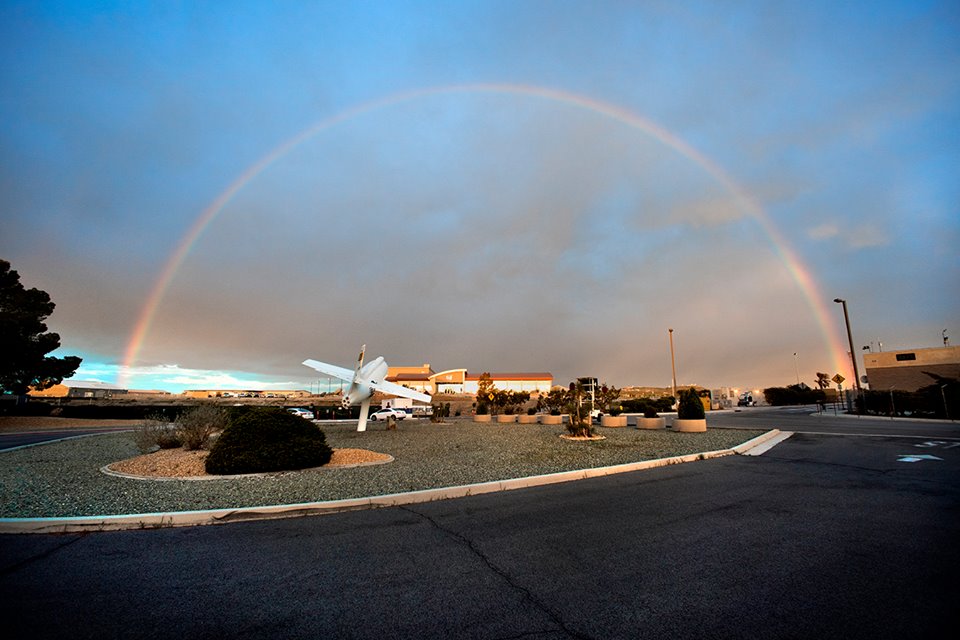Why are rainbows relatively rare? On any given day, there are billions of water drops in the air of varying sizes and dispersions, all of which light is passing through and refracting. What physical phenomenon has to occur so that these drops combine to form a rainbow? Why is it more digital (visible or not) than analog? Is it that the drops have to be consistently dispersed and sized? If that was the case, why don't rainbows appear just in the regions that have a suitable makeup? Or does a single drop cause the refraction we see across the sky? I was trying to explain rainbows to my kids but got totally confused...
Here is an example of a rainbow at my work, 7:00am in Edwards, California, facing west, no rain, but it was partly cloudy. The Rainbow seemed to have no connection to the clouds.
Hopefully the answers will allow for the existence of this rainbow. Thanks!



